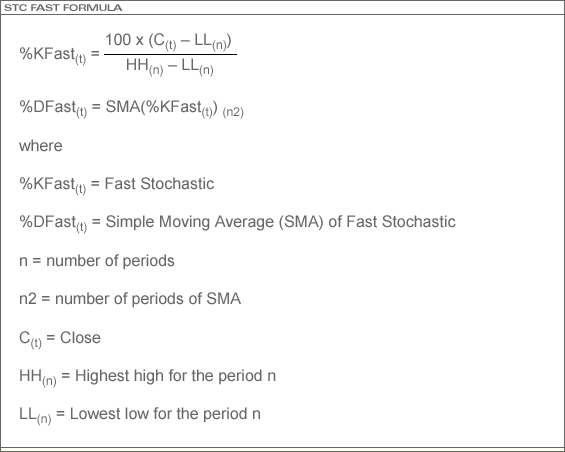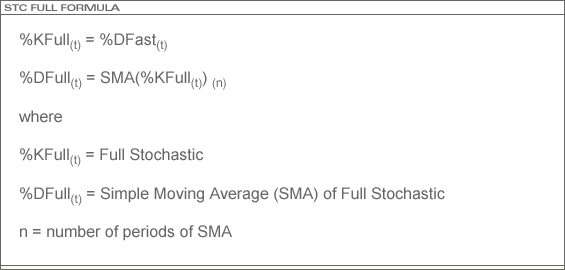隨機指數 (STC) 由George Lane發表,它是在特定時間內收市價與最高位與最低位之間的關係。若收市價越是接近最高價,顯示市況正處於強勢中; 反之,若收市價接近最低價,則顯示市況正處於弱勢中。 隨機指數共有三種: 快線, 慢線及快慢。以上三種都以慢隨機指數為基準。 快隨機指數的公式如下: 
慢隨機指數的公式如下: 
快慢隨機指數的公式如下: 
隨機指數取用3個參數,第一個及第三個參數都是設定快慢隨機指數。如想顯示快隨機指數,必須將第二個參數設定為1,第一個參數計算快隨機%K,第二個參數計算快隨機%D。平滑過後的隨機指數在分析時會較有彈性。 隨機指數是一種應用於圖表下的輔助指標。乾坤燭設定為慢隨機指數,並使用14天和兩個3天平均值來作為STC的標準參數,或可以運用EMA代替SMA來計算。 故此,以快線(14,3)的參數計算,相等於全版(14,1,3)的參數 ; 而以慢線(14,3)的參數計算,則相等於全版(14,3,3)的參數。 隨機指數可以分辨出背馳訊號。若收市價越是接近最高價,顯示市況正處於強勢中; 反之,若收市價接近最低價,則顯示市況正處於弱勢中。 當上升趨勢接近尾聲時,價格持續上升,STC不升反跌;相反,當下跌趨勢接近尾聲時,價格持續下跌,STC不跌反升。這個理論便利用了這個特點提拱了趨勢可能開始逆轉的訊息。當%D在10-15之間,便形成一個強烈的買入訊號 ; 當%D 在85-90之間,便形成一個強烈的賣出訊號。 | 

